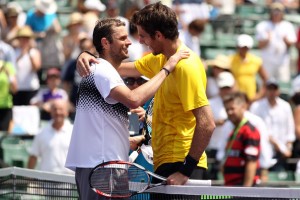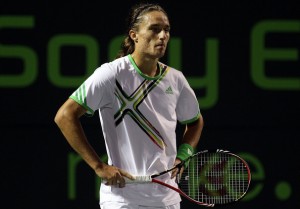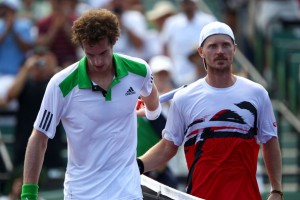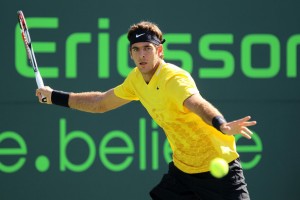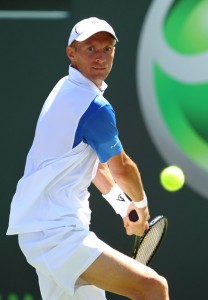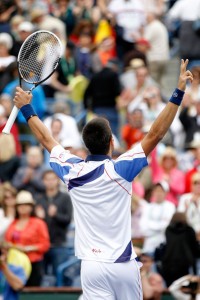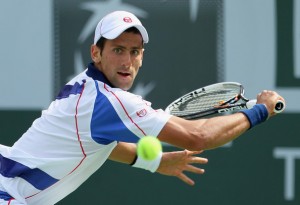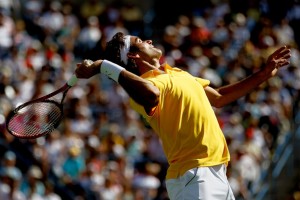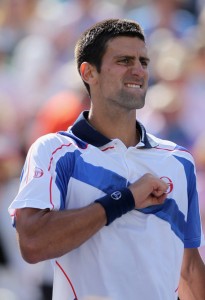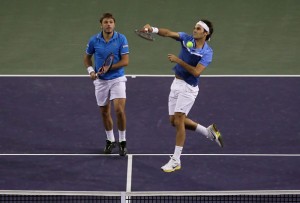Miami Masters 1000, Quarterfinals
Nadal d. Berdych, 6/2 3/6 6/3
After some encouraging early success, the tennis engineers – or ‘Tengineers’ – who are responsible for maintaining and upgrading Tomas Berdych have had a difficult time of it. There have been setbacks, but this is only to be expected. Following some very positive developments last year, there are indications that a breakthrough is not far off. 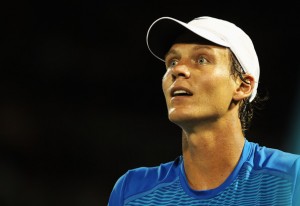 Lest one feels inclined to question the endeavour, we have only to look at IBM’s eight year journey with Deep Blue – from concept to controversial victory over Garry Kasparov – to feel reassured that ultimate success is its own sweet reward. From a programming perspective I imagine tennis presents greater obstacles even than chess. For example, Deeper Blue, the machine that eventually overcame Kasparov, was capable of calculating up to twenty moves ahead. Berdych still struggles with one. To be fair, Deep Blue was tasked with little else, while Berdych also has to run, strike a tennis ball very hard and flat, and change facial expressions, sometime as often as twice in a minute. But the Tengineers have been undaunted in their labours, and the signs are there that Project Berdych is back on track, notwithstanding a serious bug that halted progress in the second half of 2010.
Lest one feels inclined to question the endeavour, we have only to look at IBM’s eight year journey with Deep Blue – from concept to controversial victory over Garry Kasparov – to feel reassured that ultimate success is its own sweet reward. From a programming perspective I imagine tennis presents greater obstacles even than chess. For example, Deeper Blue, the machine that eventually overcame Kasparov, was capable of calculating up to twenty moves ahead. Berdych still struggles with one. To be fair, Deep Blue was tasked with little else, while Berdych also has to run, strike a tennis ball very hard and flat, and change facial expressions, sometime as often as twice in a minute. But the Tengineers have been undaunted in their labours, and the signs are there that Project Berdych is back on track, notwithstanding a serious bug that halted progress in the second half of 2010.
After losing nineteen consecutive sets to Rafael Nadal, Berdych today took one, and could well have taken two if not for a unfortunate malfunction late in the piece. As in the famous series of matches against Kasparov, the Tengineers were permitted access to their charge between sets, in order to recalibrate as they saw fit. They saw very fit after a disastrous first set, and it proved decisive, as he swept through the second. However, at 3/4 in the third , Berdych began to exhibit strange behaviour – almost signs of free will, a ghost in the machine – and promptly suffered a meltdown. The Tengineers afterward declared that a faulty transistor was to blame, and that rumours of human interference (or personality) were patently false. Indeed, human interference was limited to Nadal, who had his shoulder seen to by the trainer several times. When the Mallorcan served three aces to escape 0-40 as the deciding set got under way, our faith in human fortitude was vindicated. For now.
Federer d. Simon, 3/0 ret.
The question was posed, as poor Gilles Simon was lustily booed from the stadium today, whether the crowd would have been less incensed if the Frenchman had called the whole thing off prior to appearing on court. Is a walkover preferable to a token effort? Having already endured a WTA match, it’s not like the crowd was getting a refund either way. Really, the question is beside the point. What the crowd wanted was for Simon to be fit and play a good match against Roger Federer, who is one of the guys that transcends the sport. 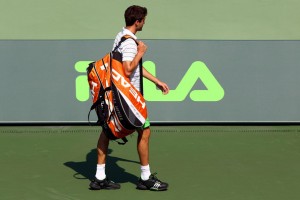 Seeing Federer play is one of those arbitrary things people have on list of things to do before they die, like swimming with dolphins, or reading Ulysses. A tennis crowd is not terribly different from any other kind of mob, and similarly infantile in its moods. They were booing Simon because they were jacked off, and he was the clearest target.
Seeing Federer play is one of those arbitrary things people have on list of things to do before they die, like swimming with dolphins, or reading Ulysses. A tennis crowd is not terribly different from any other kind of mob, and similarly infantile in its moods. They were booing Simon because they were jacked off, and he was the clearest target.
The upshot is that Federer is through to his thirteenth consecutive semifinal, where he will play Nadal. Opinion is sharply divided as to whether a free ride through the quarters will prove a help or a hindrance. With Federer, especially these days, there’s just no way of knowing. Interviewed on court after his unexpectedly epic match against Simon back at the Australian Open, Federer half-joked that he hoped never to play Simon again. Well, someone up there likes him. Or maybe they don’t like Simon. Maybe they were in the crowd today, hooting smugly as the Frenchman ambled from the court.


